Asus Vivo Tab Review
Asus Vivo Tab
A smart Windows 8 convertible tablet/laptop with simply amazing battery life.
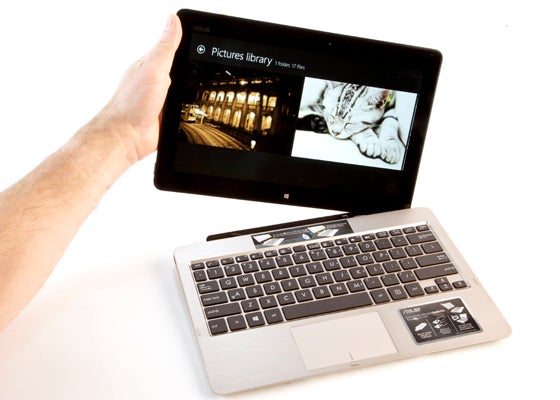
Sections
- Page 1 Asus Vivo Tab Review
- Page 2 Connectivity, Keyboard Dock and Cameras Review
- Page 3 Screen, Touch, Wacom Stylus & Speakers Review
- Page 4 Performance, Battery, Value and Verdict Review
Verdict
Pros
- Stylish and metal-clad
- Unmatched battery life
- Brightest screen in class
- Full-size Wacom stylus
Cons
- Atom still performs poorly
- No integrated stylus slot
- No full-size SD card reader
Key Specifications
- Review Price: £700.00
- Windows 8 convertible with keyboard dock
- 11.6-inch 1366 x 768 IPS touch-screen
- Dual-core 1.8GHz Atom, 2GB of RAM, 64GB SSD
- Brushed metal finish
- Wacom stylus
- Up to 19hrs of battery life
Intro
Asus was arguably the first to popularise the convertible clamshell tablet with its original Asus Transformer running Google’s Android OS, which culminated in the superb Asus Transformer Pad Infinity. As such, it should have a pretty good idea how to go about making a similar machine for Windows 8, and that’s pretty much what the Vivo Tab TF810C is. 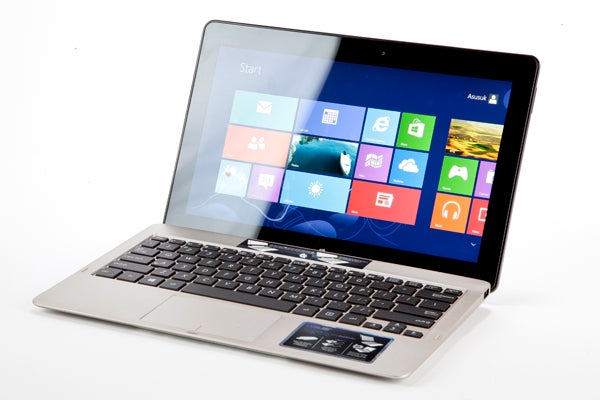
Not to be confused with the Vivo Tab RT, which is a 10-inch Tegra 3-based convertible running Windows RT for ARM, the 11.6-inch Vivo Tab TF810 runs full-fat Windows 8 on an Intel Atom processor backed by 2GB of RAM and 64GB of convertible storage. What this means is that it can run a lot of the legacy software you might have installed on your laptop or netbook as well as playing nice with apps from Microsoft’s Windows Store.
Check out our Best Windows 8 Laptops, Tablets, Convertibles and PCs roundup
Naturally this tablet/laptop also comes with an (optional in some countries but included in the UK) keyboard dock that doubles its battery life and adds two full-size USB 2.0 ports. There’s also a pressure-sensitive Wacom stylus for drawing, scribbling and handwriting, something we missed on Asus’ earlier tablets.
Its main rivals are the HP Envy x2 and Samsung Ativ Smart PC. So can the Vivo Tab really replace your netbook/laptop and tablet, and does it hold up against the competition?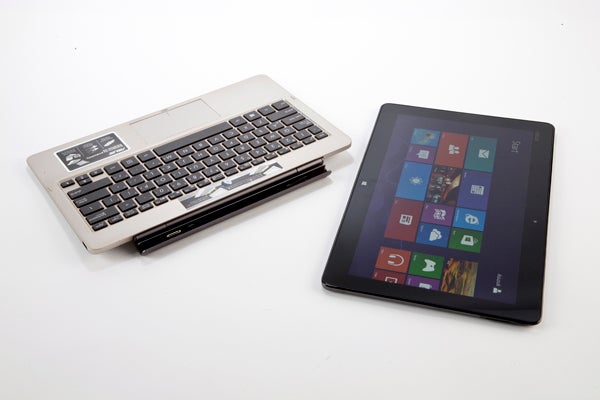
Asus Vivo Tab – Design and Build
As the designers of gems like the Infinity and Zenbook, Asus knows how to put together an attractive machine. However, while the Vivo Tab never comes across as less than premium, it’s arguably not the best-looking convertible tablet around, with that title currently held by the (more expensive and less well-featured) HP Envy x2.
This is mainly because the tablet uses a different colour to the keyboard base, and you won’t find the same colour finish on the Vivo Tab’s bezel, keyboard or touchpad either. While still attractive in its own right, if we’re being picky the design is just a wee bit lacking in cohesion. Just to put this into context though, the Asus’ brushed metal is still miles ahead of the plastic Samsung Ativ Smart PC and Acer Iconia W510. 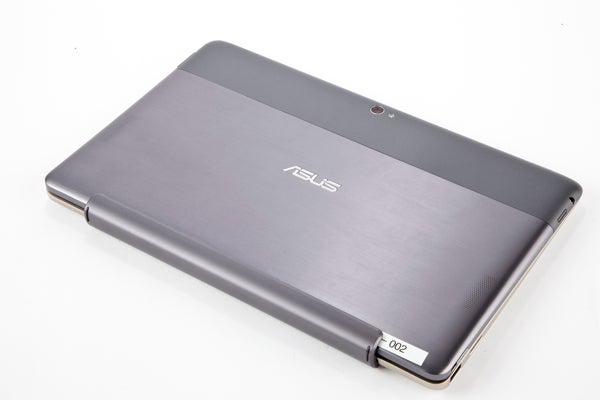
Examining the convertible’s design in a little more detail, most of the tablet’s back is finished in a smooth gunmetal brushed aluminium. Just like with the Transformer tablets, this looks and feels great but doesn’t provide much grip, especially on a sloped surface like your lap.
The tab’s top part, which is plastic to improve wireless transmission, sports a strong ribbed texture that doesn’t gel too smoothly with the brushed metal part of the back. As with most tablets the Vivo Tab’s front is toughened Corning Fit glass which fronts a black bezel and glossy black strip at its edges.
The tablet part of the Vivo Tab is reasonably slim and light, at only 8.7mm thick and weighing just 680g – thinner but a smidgeon heavier than the Apple iPad 4. Adding in the keyboard dock takes Asus’ convertible up to 1.35kg, which is in line with a netbook or 12-inch ultraportable. 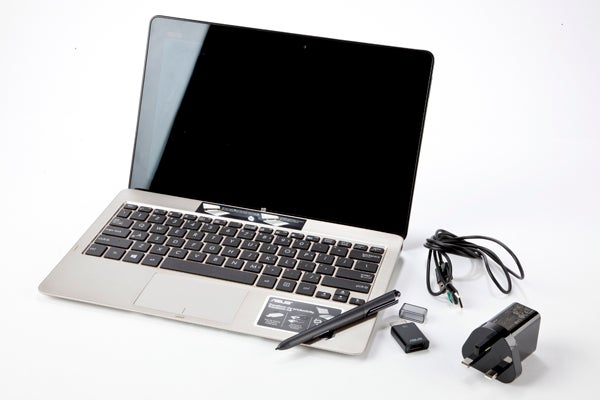
Build quality on our pre-production Vivo Tab was generally excellent, with only a hint of creak in one of the plastic corners which may well be ironed out in retail units (and we’ll update this review to let you know when we get our mitts on one of those).
In contrast with the darker finish on the tablet, the keyboard dock comes in a warmer ‘champagne’ brushed metal finish for the top part, with a matching plastic finish for its base. The touchpad is smooth matt beige, while the keyboard keys are matt black.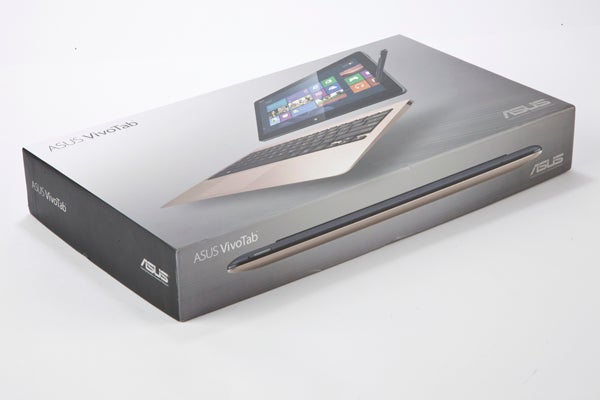
The dock didn’t feel quite as sturdy as the tablet section or those of its Transformer predecessors especially thanks to a tiny bit of flex in the keyboard area, but at the same time it’s still very solid – and once again keep in mind this is pre-production hardware.
Our main complaint with the dock is that it’s not as easy to detach as those of Asus’ own Asus Transformer range, as the release switch is now somewhat awkwardly located at the side of the tablet, rather than easily accessible in the centre of the dock.
How we test tablets
We test every tablet we review thoroughly. We use industry standard tests to compare features properly and we use the tablet as our main device over the review period. We’ll always tell you what we find and we never, ever, accept money to review a product.

